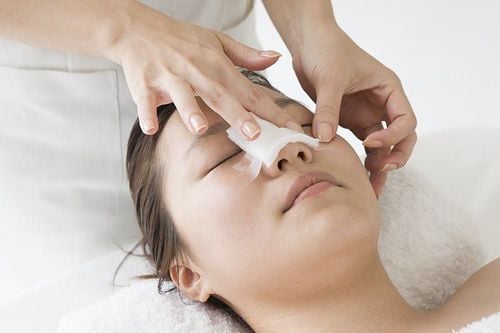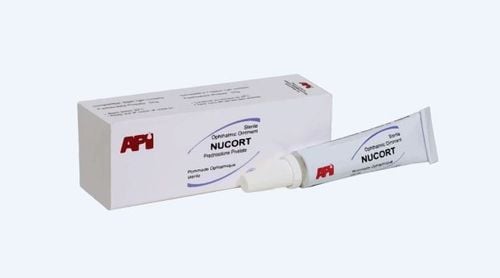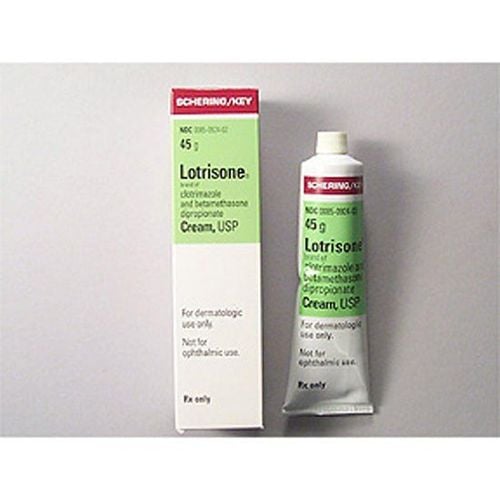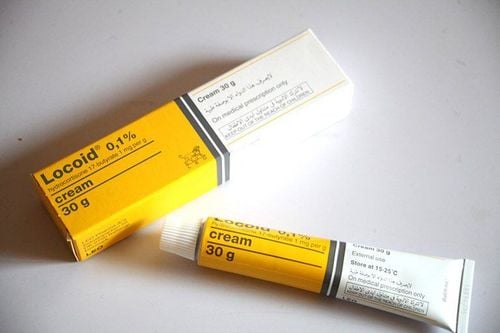This is an automatically translated article.
The article was consulted with Specialist Doctor I Le Thi Thu Hang - Dermatologist - Department of Medical Examination & Internal Medicine - Vinmec Hai Phong International General Hospital.Folliculitis is a condition in which the pores and hair follicles become inflamed or infected, creating small red bumps that can be itchy or painful. The most common cause of folliculitis is a bacterial infection, skin irritation is also a direct factor. In particular, armpit hair removal is an indirect factor, causing damage and inflammation at the site, in the pores and hair follicles.
1. What is pore inflammation?
Folliculitis, also known as folliculitis, is a common skin problem that occurs when there is superficial inflammation of one or more hair follicles, mainly caused by staphylococcus aureus and green pus bacilli. Hair follicles are everywhere except lips, palms and soles. Manifestations of folliculitis are the appearance of small, red, painful papules in the hair follicles.Inflammation of the pores can occur anywhere there is hair but is more likely to appear on the neck, thighs, buttocks or armpits. In the armpits, patients with inflammation of the pores are often the result of hair removal; in which, plucking the inflamed armpit hair will be the source of infection in the skin.
2. What are the symptoms of pore inflammation?
Symptoms will vary from person to person depending on the type of folliculitis and the extent of the disease and its location. Accordingly, the patient may have the following symptoms of pore inflammation:Groups of small red bumps like boils, some with a white head on top Blisters that break open, water, and crust over areas of skin red, large swelling, which may ooze pus These areas of skin may also be itchy and painful
3. What are the causes and risk factors for pore inflammation?
Staphylococcus aureus, a bacteria, is often the cause of illness. This type of staphylococcus usually resides on the skin and usually does not cause problems. However, if it enters through the skin, for example through a cut or scratch, it can cause problems such as inflammation of the pores.Also, there are other possible causes. pore inflammation:
Improper hair removal, such as shaving, waxing and epilation. In particular, frequent armpit hair removal will have the most effect on hair follicles because the manipulation is targeted on each hair, taking the entire hair root, creating a space inside the hair follicle. These are ideal conditions for bacteria to easily invade, reside and cause disease. Ingrown hairs – an adverse effect of mechanical hair removal methods such as epilation or waxing. Pore blockages caused by skin care products, such as oily moisturizers Fungal infections of the skin Other bacteria, such as those found in hot tubs Some medications, such as such as corticosteroids used to reduce inflammation Pre-existing skin damage, such as from shaving Have an immunocompromised illness, such as diabetes, leukemia, or HIV/AIDS
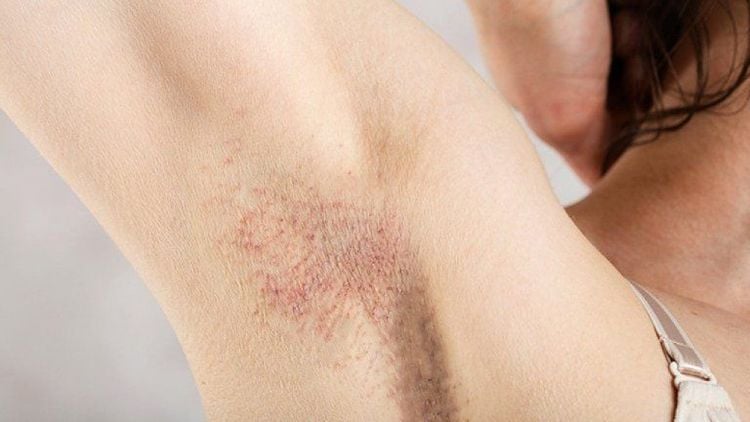
4. How to diagnose pore inflammation?
Doctors usually diagnose folliculitis by doing a physical exam, evaluating skin lesions, and asking about history and risk factors.For axillary pore inflammation, it is necessary to ask the patient if there are axillary hair removal habits such as armpit hair removal. Therefore, patients usually do not need any specific testing unless the treatment is not effective. In case the treatment is not effective, the doctor can use a sterile cotton swab, take a sample of pus at the inflammatory acne, then do a bacterial culture test and an antibiotic chart to find the right antibiotic.
5. How to treat pore inflammation?
Mild folliculitis may go away on its own without any treatment. To help themselves heal quickly and improve symptoms quickly, the patient can:Take a bath, clean the body daily Wear loose, cotton clothes that absorb sweat well Disinfect the affected area with solution Iodine-containing antiseptics (Betadin, PVP-iodine) At the same time, avoid factors that affect the skin such as not removing hair locally, including plucking underarm hair or using a razor, scratching, and wearing tight or rough clothing. on the infected area. If these self-care treatments don't work, your doctor may prescribe: Antibiotic cream if the folliculitis or folliculitis is caused by bacteria Antifungal cream, shampoo, or oral medication if it's caused by bacteria. caused by fungus
6. How to prevent pore inflammation?
To reduce the risk of folliculitis, it is best to avoid touching the affected area for at least 3 months, especially when shaving or plucking underarm hair. However, if hair removal is still needed, you can try using an electric razor or hair removal products to remove the hair without damaging the hair follicles or roots.Besides, patients also need to apply the following combinations: Wash skin with warm water and mild cleanser daily Apply a lot of shaving gel or cream, do not apply soap and leave for 5-10 minutes to hair softener. Use a new blade every time you shave to make sure the blade is clean and sharp. Shave in the direction of hair growth. Pulling armpit hair should use alcohol-sterilized tweezers before doing it. Use extra moisturizer to reduce irritation. Do not wear clothes that irritate the skin or retain heat and sweat, especially the closed skin, many folds. such as underarms Limit the use of oils and other greasy products on the skin that can clog and trap bacteria Wash hands often when skin contact is needed

Please regularly follow Vinmec website (www.vinmec.com) to update useful health care information and leave information when you need medical advice and support!
Please dial HOTLINE for more information or register for an appointment HERE. Download MyVinmec app to make appointments faster and to manage your bookings easily.






